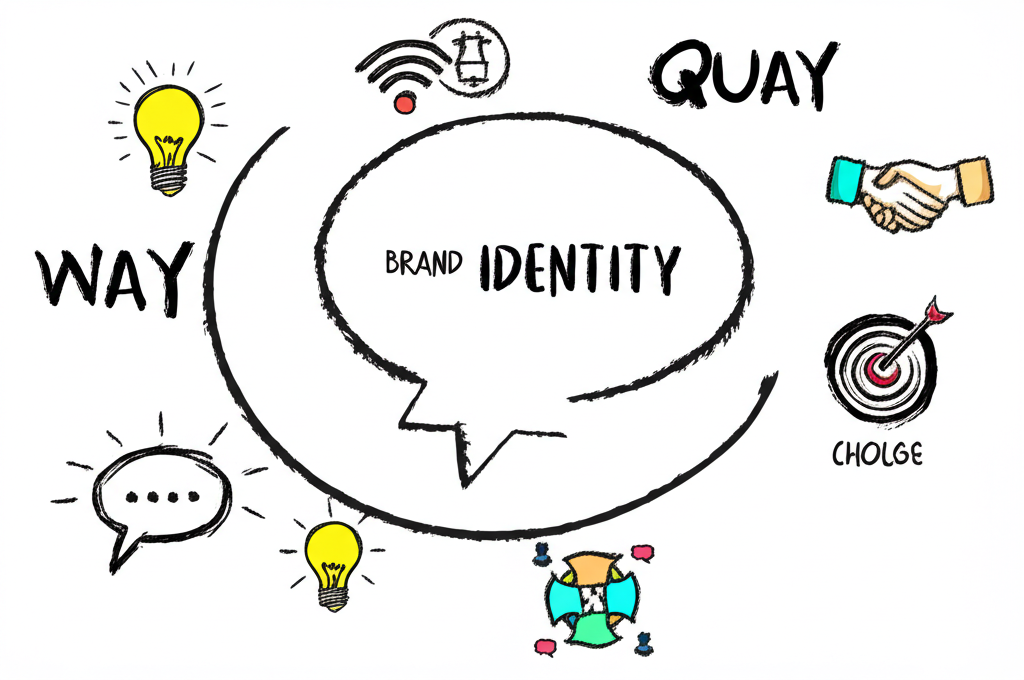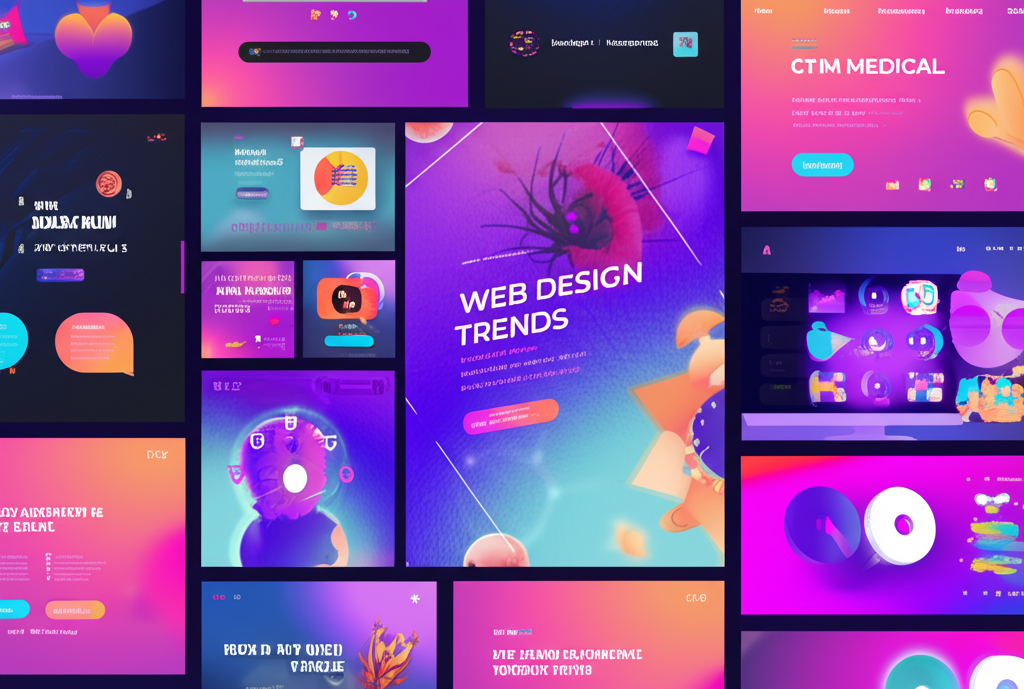Building a Strong Brand Identity Online

In today's digital landscape, a strong brand identity is more important than ever. With countless businesses competing for attention online, a distinctive and consistent brand presence helps you stand out, build recognition, and foster customer loyalty. This article explores the essential elements of building a powerful brand identity across your digital channels.
Understanding Brand Identity
Brand identity encompasses the visible elements of your brand—such as colors, design, and logo—that identify and distinguish your brand in consumers' minds. But it goes deeper than visual assets alone. A comprehensive brand identity includes your brand voice, values, messaging, and the emotions you want to evoke in your audience.
Think of brand identity as your company's personality. Just as people are drawn to certain personalities, consumers are attracted to brands that resonate with their values, aspirations, and self-image.
The Business Impact of Strong Brand Identity
Before diving into how to build your brand identity, let's consider why it matters:
- **Recognition**: A consistent brand identity makes your business instantly recognizable across platforms.
- **Trust**: Consistency builds familiarity, and familiarity breeds trust.
- **Premium Positioning**: Strong branding can justify premium pricing and reduce price sensitivity.
- **Customer Loyalty**: Emotional connections fostered by branding lead to repeat business and advocacy.
- **Competitive Advantage**: Distinctive branding helps you stand out in crowded markets.
Research shows that consistent presentation of a brand can increase revenue by up to 23%. Furthermore, 64% of consumers cite shared values as the primary reason they have a relationship with a brand.
Essential Elements of Digital Brand Identity
1. Visual Identity System
Your visual identity system includes all the graphic elements that represent your brand:
- **Logo**: The centerpiece of your visual identity, your logo should be distinctive, scalable, and reflective of your brand personality.
- **Color Palette**: Select 2-4 primary colors and 2-3 secondary colors that evoke the right emotions and associations for your brand.
- **Typography**: Choose fonts that reflect your brand personality and ensure readability across devices.
- **Imagery Style**: Develop guidelines for photography, illustrations, and graphics that maintain a consistent visual language.
- **Iconography**: Create or select icons that complement your overall design system.
These elements should work together harmoniously and be documented in a comprehensive style guide that ensures consistency across all applications.
2. Brand Voice and Messaging
How you communicate is as important as how you look:
- **Tone of Voice**: Is your brand formal or casual? Authoritative or friendly? Serious or humorous?
- **Key Messages**: What are the core messages you want to consistently communicate about your brand?
- **Value Proposition**: A clear statement of how your products or services benefit customers in ways competitors don't.
- **Brand Story**: The compelling narrative that explains why your brand exists and what it stands for.
Your verbal identity should align with your visual identity and resonate with your target audience.
3. Website Design and User Experience
Your website is often the centerpiece of your digital presence and should embody your brand identity:
- **Layout and Structure**: Should reflect your brand's organizational values and priorities.
- **Navigation**: The user journey should align with how you want customers to experience your brand.
- **Functionality**: Features and interactions should support your brand positioning.
- **Content Strategy**: The information architecture should prioritize content that reinforces your brand identity.
Remember that user experience is brand experience. Every interaction shapes how people perceive your brand.
4. Social Media Presence
Each social platform has its own culture, but your brand identity should remain consistent across channels:
- **Profile Elements**: Use consistent profile pictures, cover images, and bios.
- **Content Themes**: Develop recurring content themes that reinforce your brand identity.
- **Visual Consistency**: Apply your visual identity system to all graphics and videos.
- **Engagement Style**: How you interact with followers should reflect your brand voice.
While you may adapt your approach slightly for different platforms, the core brand identity should remain recognizable.
5. Email Marketing Design
Email remains one of the most effective digital marketing channels and should maintain brand consistency:
- **Templates**: Create email templates that incorporate your visual identity elements.
- **Header and Footer**: Design consistent header and footer elements for all communications.
- **Content Structure**: Develop a recognizable structure for different types of emails.
- **Signature Style**: Even transactional emails should reflect your brand identity.
Every email is an opportunity to reinforce your brand, from newsletters to order confirmations.
Building Your Digital Brand Identity: A Strategic Approach
Step 1: Research and Discovery
Before defining your brand identity, conduct thorough research:
- **Audience Analysis**: Understand your target customers' preferences, values, and behaviors.
- **Competitor Analysis**: Identify how competitors position themselves and find opportunities for differentiation.
- **Market Trends**: Consider current and emerging trends in your industry.
- **Internal Assessment**: Evaluate your company's mission, vision, values, and unique strengths.
This research provides the foundation for an authentic brand identity that resonates with your audience while standing apart from competitors.
Step 2: Define Your Brand Strategy
Based on your research, define the strategic elements of your brand:
- **Brand Positioning**: How you want to be perceived in the market relative to competitors.
- **Brand Promise**: The commitment you make to customers about what they'll experience.
- **Brand Attributes**: 3-5 characteristics that define your brand's personality.
- **Brand Values**: The principles that guide your business decisions and operations.
These strategic elements inform all tactical decisions about your brand identity.
Step 3: Develop Your Visual Identity
Work with professional designers to create visual elements that express your brand strategy:
- Start with your logo as the foundation
- Develop a complementary color palette
- Select appropriate typography
- Define your imagery style
- Create supporting graphic elements
Test these elements with your target audience to ensure they evoke the intended associations and emotions.
Step 4: Craft Your Verbal Identity
Develop guidelines for how your brand communicates:
- Define your tone of voice for different contexts
- Create message hierarchies and templates
- Develop your brand story and key narratives
- Create a lexicon of preferred terminology
Document these guidelines for anyone who communicates on behalf of your brand.
Step 5: Implement Across Digital Touchpoints
Apply your brand identity systematically across all digital channels:
- Redesign your website to reflect your brand identity
- Update all social media profiles and content
- Revise email templates and marketing materials
- Update digital advertising creative
- Align customer service communications
Ensure consistency while adapting appropriately to each platform's unique requirements.
Step 6: Monitor and Evolve
Brand identity isn't static—it should evolve as your business grows and markets change:
- Regularly audit your digital presence for brand consistency
- Gather feedback from customers about brand perceptions
- Track brand metrics like recognition, recall, and sentiment
- Make incremental refinements while maintaining core elements
Evolution should be thoughtful and strategic, not reactive or arbitrary.
Common Pitfalls to Avoid
Inconsistency Across Channels
Using different visual styles or tones across platforms confuses customers and dilutes brand recognition. Ensure your brand guidelines are applied consistently everywhere your brand appears.
Generic Branding
In an effort to appeal to everyone, some brands become so generic they appeal to no one. Distinctive branding that resonates deeply with your target audience is more effective than bland, universal appeal.
Disconnect Between Brand Promise and Experience
Your brand identity creates expectations. If the actual customer experience doesn't match these expectations, you'll damage trust. Ensure your operations can deliver on your brand promise.
Copying Competitors
While it's important to understand competitor positioning, mimicking successful competitors prevents differentiation. Find your unique space in the market rather than becoming a pale imitation of another brand.
Neglecting Brand Guidelines
Without comprehensive documentation and training, brand inconsistencies inevitably emerge. Invest in detailed brand guidelines and ensure everyone who represents your brand understands how to apply them.
Conclusion
A strong digital brand identity is a powerful business asset that drives recognition, builds trust, and creates emotional connections with customers. By taking a strategic approach to developing and implementing your brand identity across all digital touchpoints, you can create a distinctive presence that resonates with your target audience and supports your business objectives.
Remember that your brand identity is not just how you look and sound, but the total experience you create for customers. Every interaction is an opportunity to reinforce who you are and what you stand for. With consistency and authenticity, your brand can become one of your most valuable competitive advantages in the digital marketplace.
Brand Identity Development
Our branding experts can help you develop a cohesive, compelling brand identity that resonates with your target audience and sets you apart from competitors.
Ready to implement these strategies?
Our team of experts can help you apply these insights to your business and achieve measurable results.
Stay Updated with Industry Insights
Subscribe to our newsletter to receive the latest trends, tips, and strategies.
Related Articles

5 Web Design Trends to Watch in 2023
Discover the latest web design trends that are shaping the digital landscape in 2023 and beyond.

How to Improve Your Website's SEO in 10 Steps
Learn practical steps to boost your website's search engine rankings and drive more organic traffic.

The Importance of Mobile-First Design
With mobile traffic continuing to rise, designing for mobile first is no longer optional. Here's why it matters.
About the Author
Wilton Otto
Content specialist at WilGlobo Digital Services with expertise in branding and digital marketing strategies.
